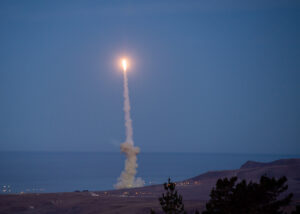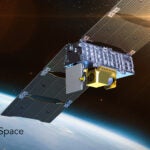
The U.S. Missile Defense Agency and Boeing [BA] said that a Dec. 11 test of the Ground-Based Midcourse Defense (GMD) demonstrated the possibility of engaging adversary ballistic missiles more rapidly. The test, using an upgraded Ground-Based Interceptor (GBI) with a Capability Enhanced-II Block 1 Exo-Atmospheric Kill Vehicle (EKV), was the first with "a three-stage GBI operating in two-stage mode, which means the third stage was commanded not to ignite and allowed earlier release of the kill vehicle, providing closer range…














